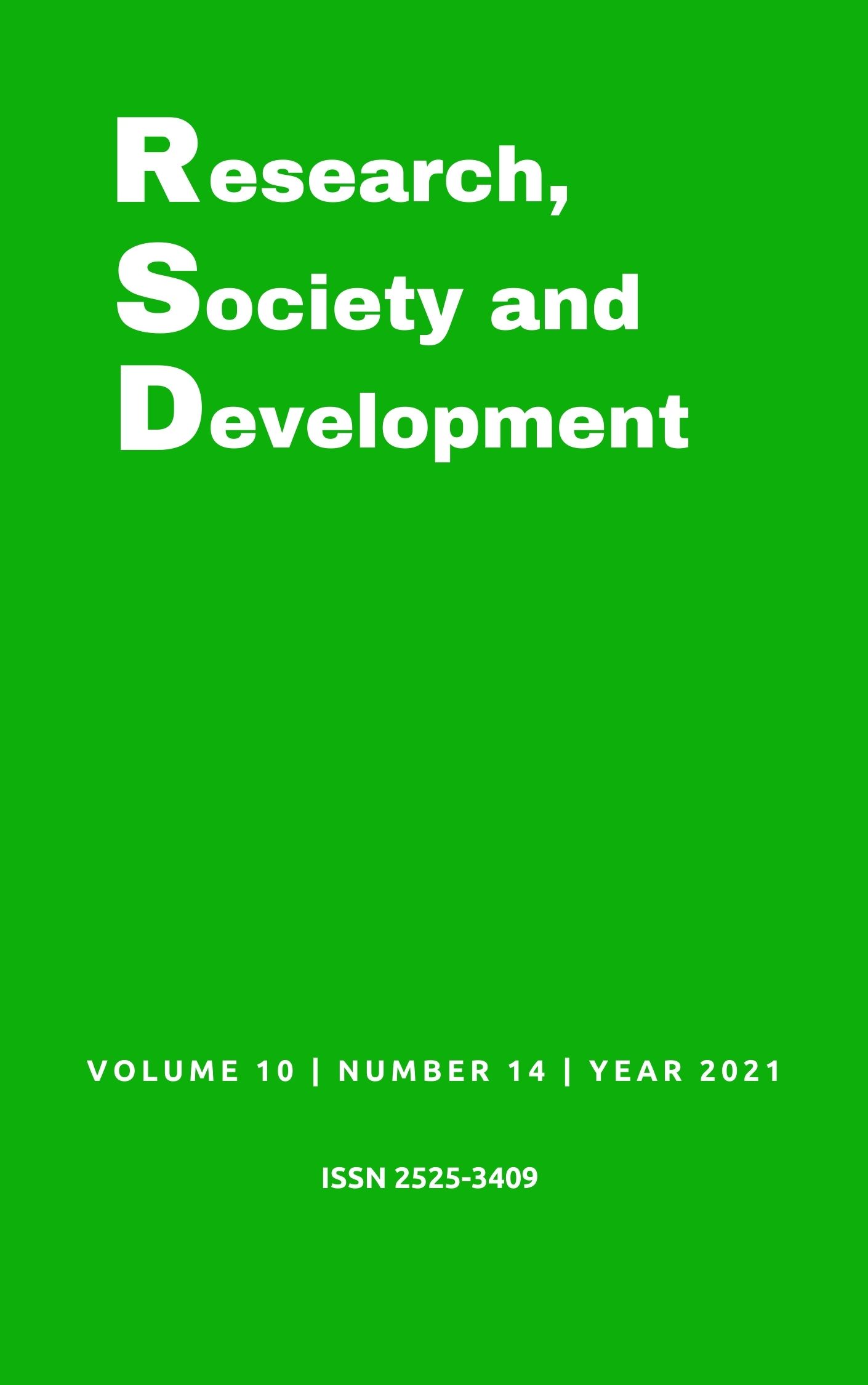Food production based on cowpea (Vigna unguiculata): nutritional importance and health benefits
DOI:
https://doi.org/10.33448/rsd-v10i14.16054Keywords:
Vigna unguiculata, Nutritional value, Food formulations.Abstract
The development and enrichment of food is of great importance not only for industry, but also for improving the nutrition of the population, where new products can be created or existing ones can be optimized. Cowpea is one of the main components of the diet in the Northeast and North regions of Brazil, especially in rural areas, due to its high nutritional value, there is a need to expand the diversification of formulations with this raw material, in order to increase the offer of low-cost products, especially for the low-income population. This work aims to identify the main formulations developed, containing cowpea as raw material, based on a systematic review. Foods containing cowpea flour as well as unprocessed foods have been shown to significantly increase levels of vitamins and minerals, thus making the food more nutritious as a whole. Soon it is concluded that the cowpea carries with it a good versatility in relation to its applicability, making it suitable for incorporation in the most diverse food formulations.
References
Abreu, B. B., Ferraz, L. R. L., Cavalcante, R. B. M., Campos, C. M. F., Gonçalves, M. F. B., Oliveira, E. L. C., Brandão, A. C. A. S., & Araújo, R. S. R M. (2020). Desenvolvimento de um “nugget” à base do resíduo da acerola (Malpighia emarginata D.C) e feijão-caupi (Vigna unguiculata L.). Braz. Jour. Dev., 6(2), 9446-9453. https://doi.org/10.34117/bjdv6n2-307
Cavalcante, R. B. M. (2018).Pão de queijo enriquecido com feijão-caupi biofortificado e suas características sensoriais, nutritivas e funcionais. 2018. 121f. Tese (Doutorado) – Programa de Pós-Graduação em Alimentos e Nutrição. Universidade Federal do Piauí, Teresina. https://www.google.com/url?sa=t&rct=j&q=&esrc=s&source=web&cd=&cad=rja&uact=8&ved=2ahUKEwib95GhsrjwAhWDppUCHfIJCe8QFnoECAUQAA&url=https%3A%2F%2Frepositorio.ufpi.br%2Fxmlui%2Fhandle%2F123456789%2F1394&usg=AOvVaw0f4YdBBjawc0pNUhnJHudN
Cavalcante, R. B. M., Morgano, M. A., Silva, K. J. D., Rocha, M. M., Araújo, M. A. M., & Moreira-Araújo, R. S. R. (2016). Cheese bread enriched with biofortified cowpea flour. Ciência e Agrotecnologia, 40(1), 97-103. https://doi.org/10.1590/S1413-70542016000100009
Faostat, F. Food And Agriculture Organization Of The United Nations. FAO. Crops: cowpeas, dry (2017). http://faostat3.fao.org/browse/Q/QC/E
Freire-Filho, F. R., Lima, J. A. A., & Ribeiro, V. Q. Feijão-caupi: avanços tecnológicos. Brasília: Embrapa Informação Tecnológica, 2005. 519p.
Kigel, J., Rosental, L., & Fait, A. Seed Phisiology and Germination of Grain Legume. In: De Ron A. (eds) Grain Legume. Handbook of Plant Breeding. New York: Springer, 2015. p.327-363.
Landim, L. A. S. R., Silva, K. J. D., Hashimoto, J. M., & Rocha, M. M. (2019). Composição centesimal de cookies a base de farinhas variadas. Anais do V CONAC (Embrapa). 1(1), 1-4. https://www.embrapa.br/busca-de-publicacoes/-/publicacao/1117885/composicao-centesimal-de-cookies-a-base-de-farinhas-variadas
Lima, J. R. et al. Vegetal burgers of cashew fiber and cowpea: formulation, characterization and stability during frozen storage. Rev. Ciênc. Agron., 49(4), 708-714.
LPWG - The Legume Phylogeny Working Group. A new subfamily classification of the Leguminosae based on a taxonomically comprehensive phylogeny. Taxon,66(1),44-77, 2017.https://doi.org/10.12705/661.3
Okon, J. E. Effect of Water stress on some growth aspects of two cultivars of cowpea, Vigna unguiculata (L.) Walp Fabaceae. Bulletin of Environment, Pharmacology and Life Sciences, 2(5),.69-74. http://www.bepls.com/april_2013/12.pdf
Maia, L. C., Nano, R. M. W., Santos, W. P. C., Nascimento, P. V. B. S., Miranda, K. E. S., Oliveira, F. S. (2020). Mineral profile and characterisation of cookies made from legume green grain flour. Food Science and Technology, https://doi.org/10.1590/fst.22020
Pereira, E. J., Carvalho, L. M., Dellamora-Ortiz, G. M., Cardoso, F. S., & Carvalho, J. L. (2016). Effect of different home-cooking methods on the bioaccessibility of zinc and iron in conventionally bred cowpea (Vigna unguiculata L. Walp) consumed in Brazil. Food & nutrition research, 60, 29082. https://doi.org/10.3402/fnr.v60.29082
Pereira et al. (2018). Metodologia da pesquisa científica.
Rahman, A. H. M., & Parvin, M. I. A. Taxonomic Studies on the family Fabaceae (Weeds) at Rajshahi University Campus. Plant,3(3),20-25, 2015.https://doi.org/10.11648/j.plant.20150303.11
Ribeiro, G. S., Ferreira, A. F., Lyra N. C. M.; Mercês S. F. S., Oliveira, C., Alves, E. M., Silva, S. G., & Carvalho, C. A. L. Aspects of the floral biology and pollen properties of Vigna unguiculata L. Walp (Fabaceae). African Journal of Plant Science, 7(5), 149-154, 2013.https://doi.org/10.5897/AJPS13.1014
Silva, K. J. D., Rocha, M. M., & Menezes-Junior, J. A. Socioeconomia. In: Bastos, E. A. A cultura do feijão-caupi no Brasil. Teresina: Embrapa Meio-norte, 2016. 6-12.
Souza, A. C. M. Análise transcriptômica das vias metabólicas do inositol e de oligossacarídeos da família rafinose, em feijão-caupi sob estresse abiótico e biótico. 2019. Tese (Doutorado em Ciências Biológicas) – Universidade Federal de Pernambuco, Recife, 2019. https://repositorio.ufpe.br/bitstream/123456789/35338/1/TESE%20Amanda%20Cordeiro%20de%20Melo%20Souza.pdf
Souza, E. J. D. (2018). Propriedades tecnológicas, nutricionais e sensoriais de biscoito tipo cookie sem glúten, desenvolvido com arroz de diferentes teores de amilose e feijão-caupi. 2018. 92f. Dissertação (Mestrado) – Programa de Pós-Graduação em Ciência e Tecnologia de Alimentos. Universidade Federal de Pelotas, Pelotas. http://guaiaca.ufpel.edu.br/handle/prefix/4093
Wilk, R., & Barbosa, L. Rice and beans: a unique dish in a hundred places. Berg, 2012. 282p.
Downloads
Published
Issue
Section
License
Copyright (c) 2021 Adolfo Marcito Campos de Oliveira; Bernardo Melo Neto; Maurisrael de Moura Rocha; Marielle Rodrigues da Silva ; Mariely Rodrigues de Oliveira

This work is licensed under a Creative Commons Attribution 4.0 International License.
Authors who publish with this journal agree to the following terms:
1) Authors retain copyright and grant the journal right of first publication with the work simultaneously licensed under a Creative Commons Attribution License that allows others to share the work with an acknowledgement of the work's authorship and initial publication in this journal.
2) Authors are able to enter into separate, additional contractual arrangements for the non-exclusive distribution of the journal's published version of the work (e.g., post it to an institutional repository or publish it in a book), with an acknowledgement of its initial publication in this journal.
3) Authors are permitted and encouraged to post their work online (e.g., in institutional repositories or on their website) prior to and during the submission process, as it can lead to productive exchanges, as well as earlier and greater citation of published work.


